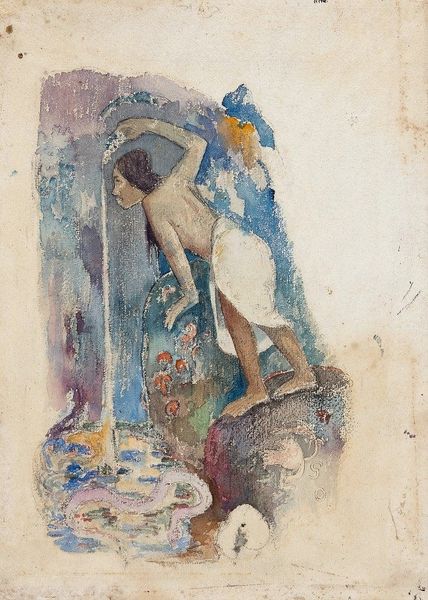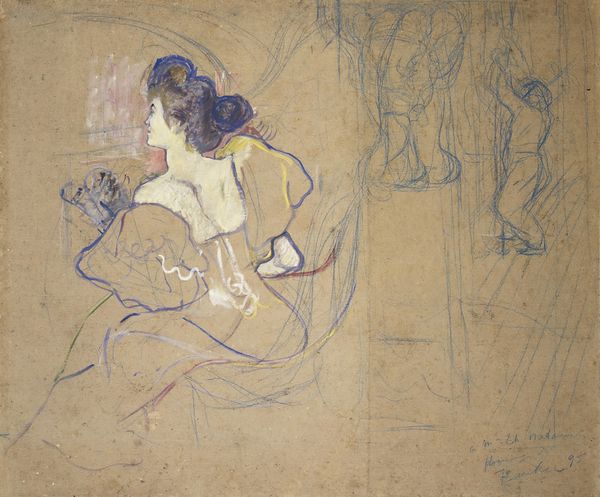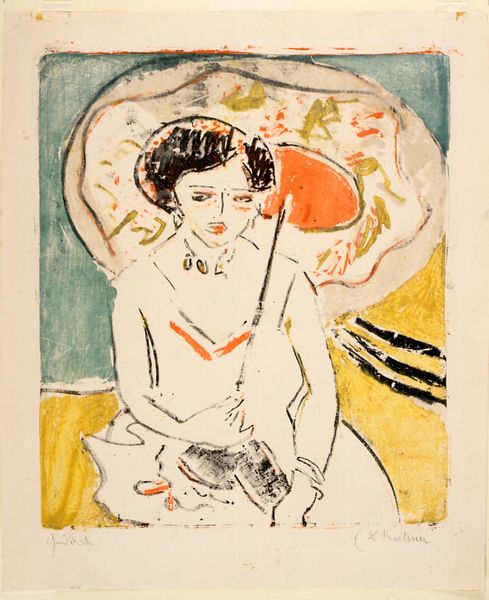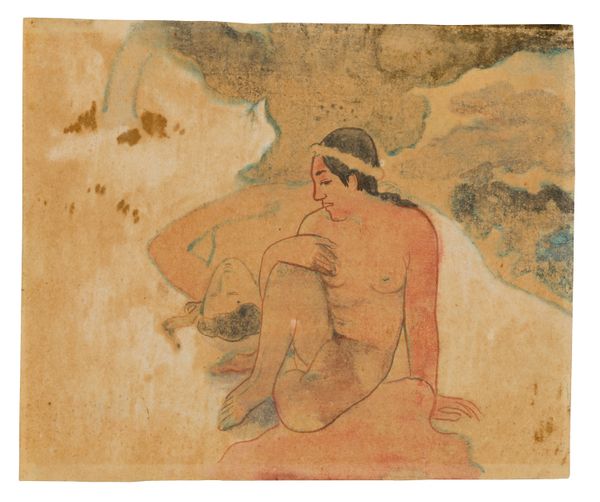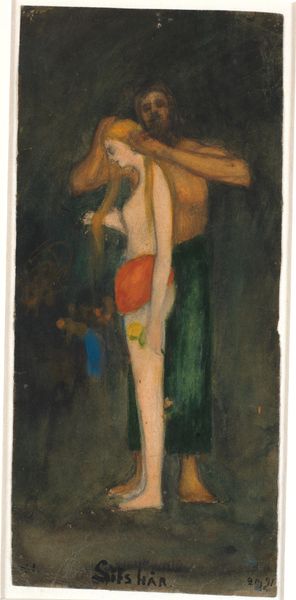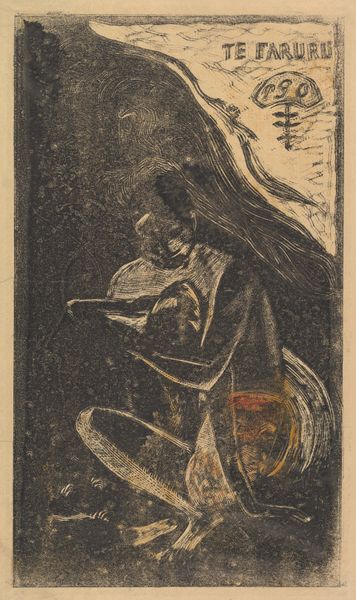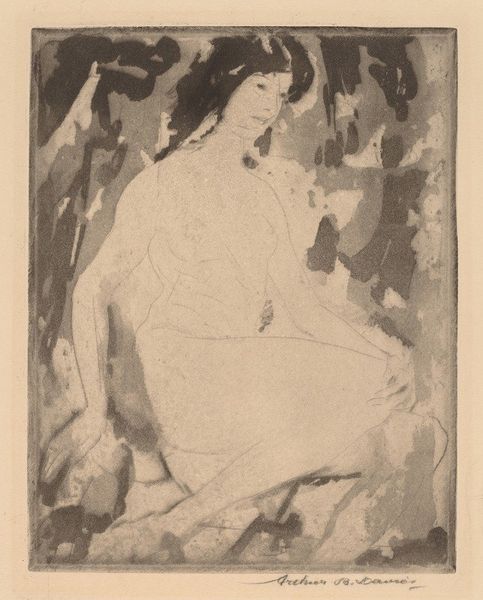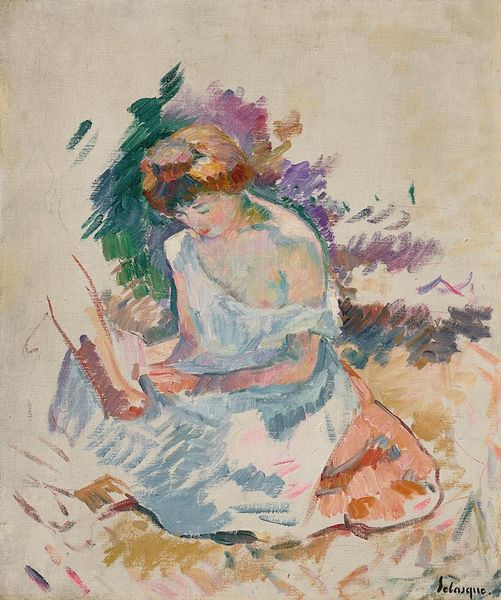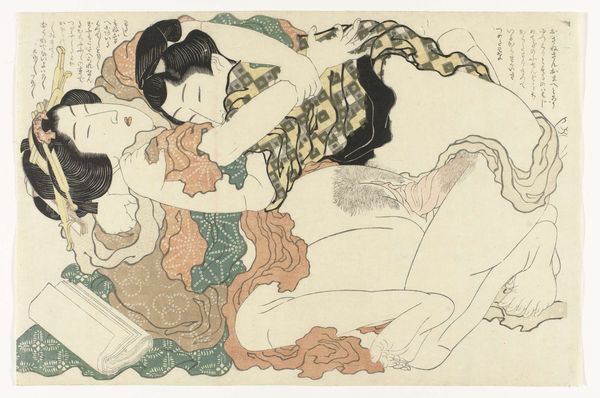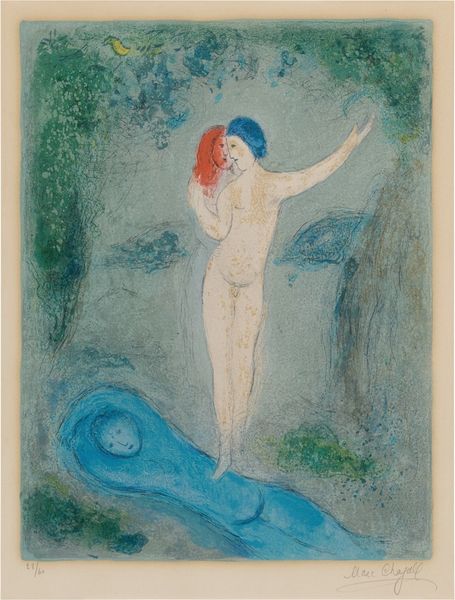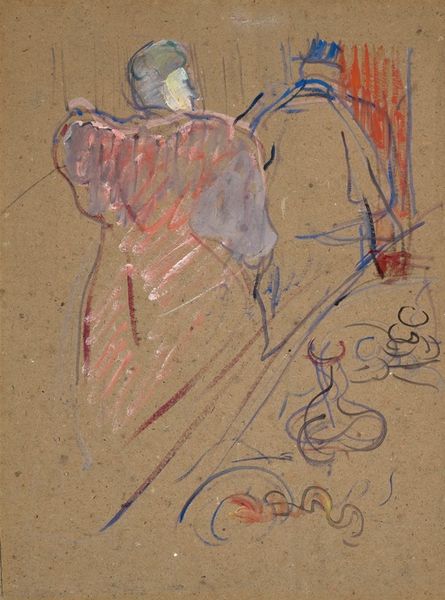![Arearea no Varua Ino (Words of the Devil) [recto] by Paul Gauguin](/_next/image?url=https%3A%2F%2Fd2w8kbdekdi1gv.cloudfront.net%2FeyJidWNrZXQiOiAiYXJ0ZXJhLWltYWdlcy1idWNrZXQiLCAia2V5IjogImFydHdvcmtzL2Y1MDczZmNmLThiNmItNDhkMi1hYWEwLTNmM2QzNWMyMmM4Mi9mNTA3M2ZjZi04YjZiLTQ4ZDItYWFhMC0zZjNkMzVjMjJjODJfZnVsbC5qcGciLCAiZWRpdHMiOiB7InJlc2l6ZSI6IHsid2lkdGgiOiAxOTIwLCAiaGVpZ2h0IjogMTkyMCwgImZpdCI6ICJpbnNpZGUifX19&w=3840&q=75)
painting, print, watercolor
#
painting
# print
#
landscape
#
figuration
#
oil painting
#
watercolor
#
orientalism
#
symbolism
#
post-impressionism
#
nude
Dimensions: sheet: 24.4 x 16.6 cm (9 5/8 x 6 9/16 in.) support: 33.4 x 22.7 cm (13 1/8 x 8 15/16 in.)
Copyright: National Gallery of Art: CC0 1.0
Editor: This is Paul Gauguin's "Arearea no Varua Ino (Words of the Devil)" from 1894. It appears to be a watercolor or oil painting, maybe even a print. I'm really struck by the flat planes of color and how the figures seem to exist almost as part of the landscape itself. How do you interpret this work, especially regarding Gauguin’s materials and methods? Curator: From a materialist perspective, this piece reveals much about Gauguin's relationship with his subject matter. The very title "Words of the Devil" directs us to question the authenticity of Gauguin’s representations of Tahitian life. He wasn't just depicting what he saw, but constructing a vision fueled by his own cultural biases and the exotic fantasies consumed by the European market. Editor: So you're saying his choice of materials and techniques might be influencing how Tahiti is perceived? Curator: Precisely. The flattened perspective and use of color could be interpreted as Gauguin’s attempt to move away from Western academic painting. But even in this rejection, we see the power dynamics at play. He’s extracting visual elements from Tahitian culture and repurposing them through a Western artistic lens. How does the visible labor involved in making prints versus paintings impact your understanding? Editor: That’s fascinating! I hadn’t really considered the implications of printmaking in circulating potentially skewed images. It’s interesting how his aesthetic choices intersect with issues of cultural appropriation and the romanticization of "primitive" societies. It really opens my eyes to seeing beyond the surface beauty. Curator: Exactly. By focusing on the processes, materials, and context, we can deconstruct the complex layers of meaning embedded within even the most seemingly idyllic scenes. It's important to consider his intentions behind circulating such images to western audiences.
Comments
No comments
Be the first to comment and join the conversation on the ultimate creative platform.
